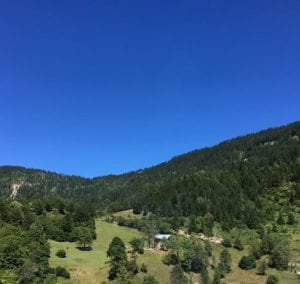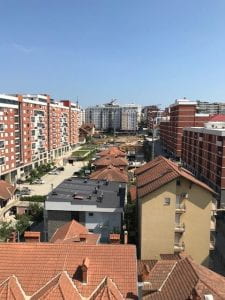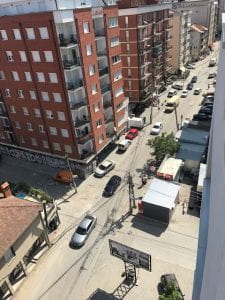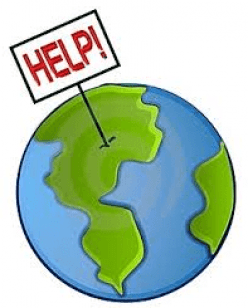So, the summer holidays are here and for me that means 5 whole weeks of sun staying with my in-laws, luckily for me they live in Kosovo. A quick 3 hour flight and summer bliss awaits us (I know the flight adds to my carbon footprint, but I will try hard to off set this over the coming months).
As landlocked country, Kosovo is bordered by Serbia to the north and east, North Macedonia to the south, Albania to the west, and Montenegro to the northwest. It is a newly formed country (Kosovo only declared its independence 11 years ago, on February 17 2008) and is a great example of city development.
The Kosovo War was a quick and highly destructive conflict starting in late February 1998 and lasted until 11 June 1999. It displaced a huge percent of the population and left the country in pieces. The severity of the unrest in Kosovo and the involvement of the North Atlantic Treaty Organisation (NATO) brought the Kosovo conflict to international attention in the late 1990’s. The conflict led to the displacement of thousands and lasting tension between Serbs and Albanians. The war ended in 1999, but saw a large amount of the Albanian Kosovan’s (approximately a third of it’s population) living widespread across the world. The population that remained in Kosovo have seen huge changes over the last 20 years.
Over the last five years I have watched, with interest, each time we have visited (2 or 3 times a year). Each time more and more people have moved out of the villages and into the big cities (as have our own family). I can see clearly that the population is seeking financial stability, work and access to reliable amenities including health care, but for me the beauty of the country lies out in the village or ‘Katund’ as the locals call it.

The cities, especially Pristina, where my partners parents live, (the capital of the country) is a busy, bustling hive of activity. You can see it is always undergoing a huge amount of development, to ensure there is enough housing and amenities for the growing population and changes every year.
Every time we visit small pieces of land have been redeveloped and a huge city skyline has grown over the last few years.


As I sit on our beautiful balcony, watching the sun set over the city it reminds me that the urban challenge is much closer to home than we realise. To see many of the things we have learnt in the Cities and Climate Change module up close and to realise cities can be sources of innovation, solutions and opportunities to improve the lives of their populations if only the governments of the countries and the leaders of the cities plan urban development well. If they consider their citizens need for adequate affordable housing, they need appropriate and fair economic opportunity, workable public transport and access to good public services, green spaces and clean air. Good urban planning can lead to resilient cities, if the powers that be step up to the plate and deliver what their citizens really need. Climate change should be a huge agenda for our development cities – it really can make a difference.
